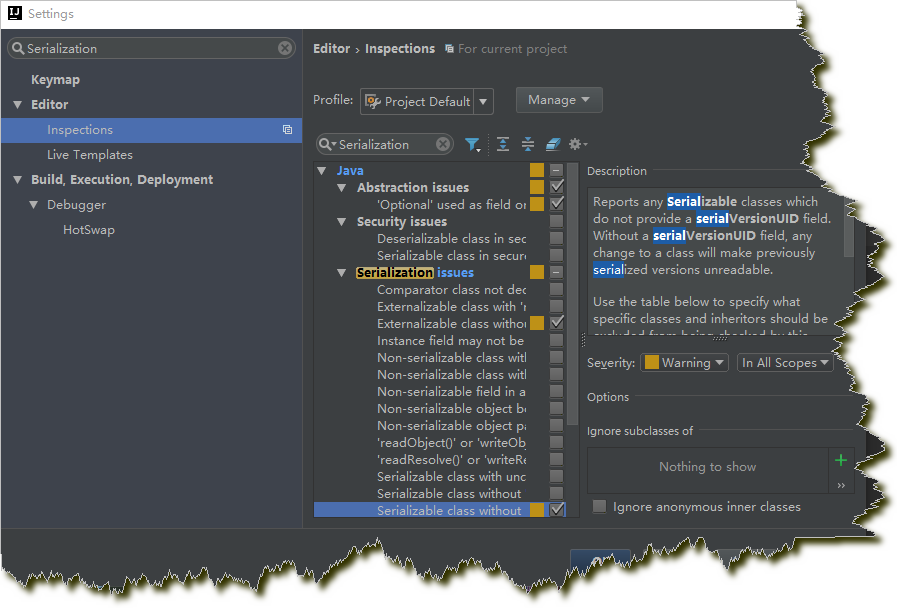serialVersionUID
1. java api
The serialization runtime associates with each serializable class a version number, called a serialVersionUID, which is used during deserialization to verify that the sender and receiver of a serialized object have loaded classes for that object that are compatible with respect to serialization. If the receiver has loaded a class for the object that has a different serialVersionUID than that of the corresponding sender's class, then deserialization will result in an InvalidClassException. A serializable class can declare its own serialVersionUID explicitly by declaring a field named "serialVersionUID" that must be static, final, and of type long:
ANY-ACCESS-MODIFIER static final long serialVersionUID = 42L;
If a serializable class does not explicitly declare a serialVersionUID, then the serialization runtime will calculate a default serialVersionUID value for that class based on various aspects of the class, as described in the Java(TM) Object Serialization Specification. However, it is strongly recommended that all serializable classes explicitly declare serialVersionUID values, since the default serialVersionUID computation is highly sensitive to class details that may vary depending on compiler implementations, and can thus result in unexpected InvalidClassExceptions during deserialization. Therefore, to guarantee a consistent serialVersionUID value across different java compiler implementations, a serializable class must declare an explicit serialVersionUID value. It is also strongly advised that explicit serialVersionUID declarations use the private modifier where possible, since such declarations apply only to the immediately declaring class--serialVersionUID fields are not useful as inherited members. Array classes cannot declare an explicit serialVersionUID, so they always have the default computed value, but the requirement for matching serialVersionUID values is waived for array classes.
2. stackoverflow
If you're serializing just because you have to serialize for the implementation's sake (who cares if you serialize for an HTTPSession, for instance...if it's stored or not, you probably don't care about de-serializing a form object), then you can ignore this.
If you're actually using serialization, it only matters if you plan on storing and retrieving objects using serialization directly. The serialVersionUID represents your class version, and you should increment it if the current version of your class is not backwards compatible with its previous version.
Most of the time, you will probably not use serialization directly. If this is the case, generate a default serializable uid by clicking the quick fix option and don't worry about it.
3.IDEA 启用自动生成
Settings → Editor → Inspections → Java → Serialization issues → Serializable class without 'serialVersionUID' 默认是未选中
